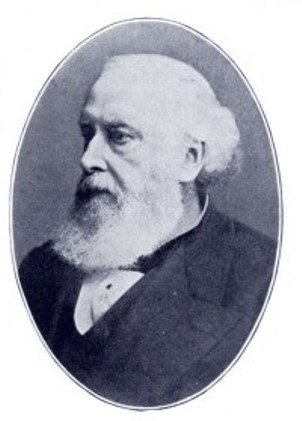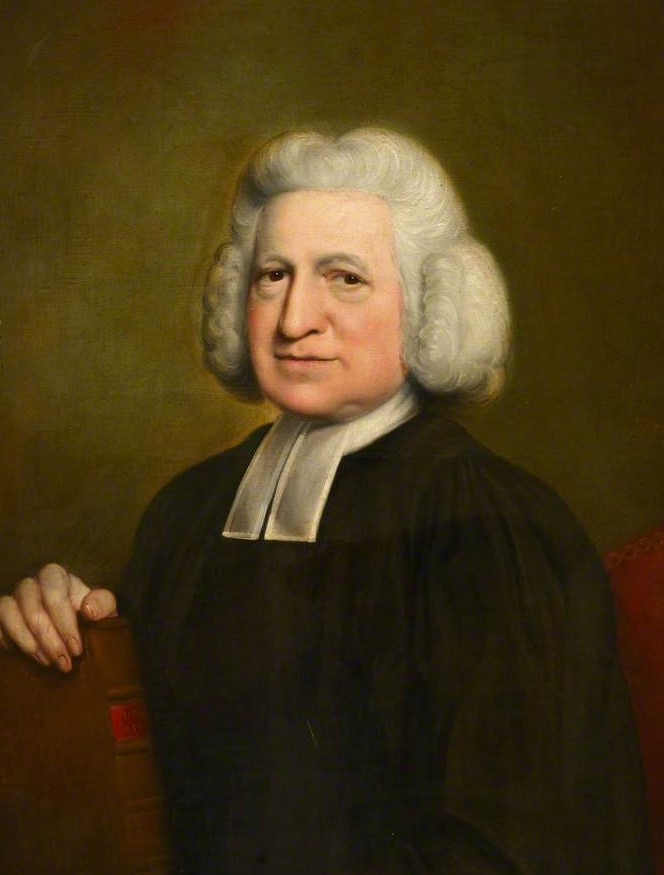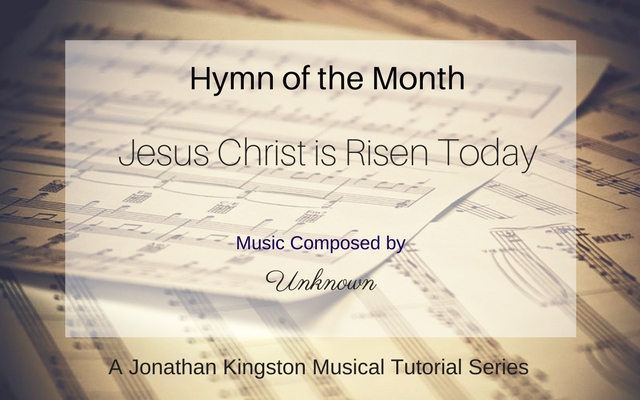For this month’s hymn we have appropriately selected the Christian Easter hymn, “Jesus Christ is Risen Today”. The author is unknown but early manuscripts suggest that the hymn was written in Germany in the 14th century. The hymn is most frequently set to the hymn tune “Easter Hymn” which was composed in the Lyra Davidica in early 18th century.

“Jesus Christ is Risen Today” was first written in Latin titled “Surrexit Christus hodie”. The English translation, along with the tune, first appeared in a collection of Psalms and Hymns called Lyra Davidica, or a Collection of Divine Songs and Hymns (John Walsh) published in 1708. The verses of the hymn were later revised in 1749 by John Arnold. In 1740 Charles Wesley also added a fourth verse to the hymn as an alternative, which was later adopted as part of it. The hymn is much noted for having Alleluia as a refrain after every line.
The popularity of the hymn is due, in part, to the tune it is sung to. It is set to a piece of music entitled “Easter Hymn” which was composed in the Lyra Davidica for “Jesus Christ Is Risen Today”. There was a later version of “Easter Hymn” composed by William Henry Monk which is also used frequently. Easter Hymn is now one of the best and most joyous Easter tunes.

“Jesus Christ is Risen Today” is sometimes confused with “Christ the Lord Is Risen Today”, which was written by Charles Wesley. This is because the wording is similar except that “Christ the Lord Is Risen Today” normally uses either of the tunes Nassau, Gwalchmai or Llanfair instead of “Easter Hymn”.
Although little is known about the origin of “Jesus Christ is risen today” it brings together the two great themes of Holy Week and Easter, the Cross and the Resurrection and celebrates the message of Holy Week and Easter – Christ crucified and risen.
This is played on a custom built Envoy 23-S, which is a very popular church instrument.
More About Jonathan Kingston’s Musical Background
 Jonathan studied the organ with Professor Ian Tracey and Ian Wells of Liverpool’s Anglican Cathedral, home to one of the largest pipe organs in the world. He was appointed Organ Scholar, and subsequently Sub-Organist to Bradford Cathedral before securing positions as Assistant Director and Director of Music at two leading independent schools. He is currently Associate Director of Music at the Ordinariate Church of Our Lady of the Assumption, Piccadilly.
Jonathan studied the organ with Professor Ian Tracey and Ian Wells of Liverpool’s Anglican Cathedral, home to one of the largest pipe organs in the world. He was appointed Organ Scholar, and subsequently Sub-Organist to Bradford Cathedral before securing positions as Assistant Director and Director of Music at two leading independent schools. He is currently Associate Director of Music at the Ordinariate Church of Our Lady of the Assumption, Piccadilly.
Jonathan’s Work With Viscount
Jonathan works with us as our very own in house organist – he covers several areas from sales, demonstrations, voicing of instruments and performing. His playing features on the current promotional DVD material for Viscount, and he would be very pleased to hear from any churches or individuals requiring an engaging and lively recitalist. If you would like to connect with Jonathan directly, please feel free to follow him on Twitter (@jonkingston) or by email on jonkingston@hotmail.co.uk.
More About the Organ Being Played In This Demonstration
Jonathan plays this piece on an instrument based on our Envoy 23-S. A ‘Physical Modelling’ based instrument with 23 stops in a real wood veneer cabinet. It has a huge internal library allowing the user to create 4 totally individual voice pallets from classic English through Baroque and Romantic. It benefits from a full complement of divisional thumb pistons and additional toe pistons. The standard 23-S organ has a 30 note pedal board while the instrument in the film has a 32 note board. For more information have a look at the specifications here.
I have had a passion for church organs since the tender age of 12. I own and run Viscount Organs with a close attention to the detail that musicians appreciate; and a clear understanding of the benefits of digital technology and keeping to the traditional and emotional elements of organ playing.



